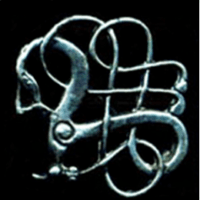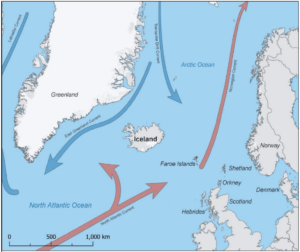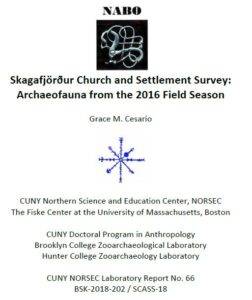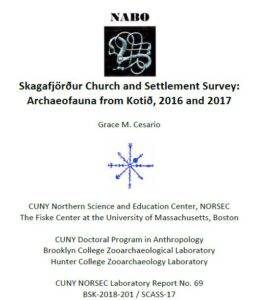- Version
- Download 849
- File Size 0.00 KB
- File Count 1
- Create Date 10 November 2016
- Last Updated 26 September 2023
Skagafjörður Archaeological Settlement Survey, 2008 Excavations The Archaeofauna of Stóra-Seyla Area C and Area D
The Skagafjörður Archaeological Settlement Survey (SASS) project surveyed the Langholt region, in Skagafjörður, northern Iceland between 2001 and 2014 (Figure 1, Figure 2). Major excavations of Stóra-Seyla took place in 2008 and 2009 (Bolender 2008; Bolender et al. 2009). Stóra-Seyla is one of two settlement period farms located in the Langholt region of Skagafjörður (Bolender 2008:4), and may have been occupied since first settlement in 871 AD (Bolender et al. 2011:86). This farm was one of the wealthiest in the region, and there was a church constructed there by the 13th century which was maintained until the 18th century (Bolender 2008:4). Stóra-Seyla is also one of two farms in Langholt to be relocated, moving from a lower elevation area to a higher one after in the 11th century.
Excavations at Stóra-Seyla consist of multiple distinct areas; the two focused on for this analysis are Area C and Area D. Area C is made up of a few different structures, the majority of which were no longer used after the relocation of the farmstead. Structure 1, a medieval barn, was built post-1104 and after the farmstead relocated; however, it shows that the site was used continuously, despite moving the main farm (e.g., Bolender 2008:9; Bolender et al. 2009:4–5). There was midden material that came from Structure 1. Structure 2 is a large rectilinear building that looks similar to a Viking Age hall (Bolender et al. 2009:20). It was built before 1104 AD, and possibly before 1000 AD, and has a domestic floor (Bolender 2008:9; Bolender et al. 2009:14). Only 21 fragments of bone came from this structure. The third structure is a small skáli that also dates to the Viking Age (Bolender 2008:9; Bolender et al. 2009:14). The majority of the archaeofauna from Area C comes from this structure.
Updated: 19 November 2019






Share this: